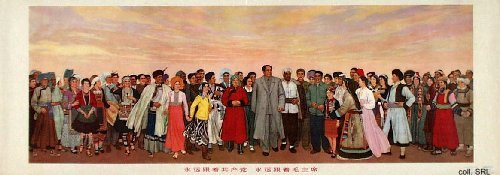In the late 1950s, the strategy of 'people's war' was revived by Mao, who insisted at the time that men rather than weapons decide wars. Mao's strategy, strongly supported by Lin Biao, was in opposition of the desire for further professionalization as proposed by various other military men, including Peng Dehuai. The goal of this "everyone-a-soldier"-movement was to maintain control over a vast territory with only thin resources, to protect the national borders, and if necessary, to retreat to the interior to fight a protracted war. In case of attack, space was to be traded for time.


To do this, it was necessary to "lure the enemy deep" and to mobilize popular resistance. As a consequence, the principle of guerilla warfare against potential invaders was revived, leading to the interpenetration of military and civilian life. Soldiers lived among civilians as "fish in the water", and trained them in waging resistance.


In the 1960s, the Chinese peasantry was organized through the commune system into a vast people's militia. In all, about a quarter of the population was involved. The militia was given simple training, often with wooden rifles, by militia departments which were staffed by PLA officers. An important part of the training process was ideological work: learning from the various model soldiers which were held up for emulation, such as Lei Feng, Wang Jie, Dong Cunrui, Ouyang Hai and many others. By the same token, many of these model soldiers attained martyr status as a result of accidents with life ammunition while training the militias.

 To do this, it was necessary to "lure the enemy deep" and to mobilize popular resistance. As a consequence, the principle of guerilla warfare against potential invaders was revived, leading to the interpenetration of military and civilian life. Soldiers lived among civilians as "fish in the water", and trained them in waging resistance.
To do this, it was necessary to "lure the enemy deep" and to mobilize popular resistance. As a consequence, the principle of guerilla warfare against potential invaders was revived, leading to the interpenetration of military and civilian life. Soldiers lived among civilians as "fish in the water", and trained them in waging resistance.
 In the 1960s, the Chinese peasantry was organized through the commune system into a vast people's militia. In all, about a quarter of the population was involved. The militia was given simple training, often with wooden rifles, by militia departments which were staffed by PLA officers. An important part of the training process was ideological work: learning from the various model soldiers which were held up for emulation, such as Lei Feng, Wang Jie, Dong Cunrui, Ouyang Hai and many others. By the same token, many of these model soldiers attained martyr status as a result of accidents with life ammunition while training the militias.
In the 1960s, the Chinese peasantry was organized through the commune system into a vast people's militia. In all, about a quarter of the population was involved. The militia was given simple training, often with wooden rifles, by militia departments which were staffed by PLA officers. An important part of the training process was ideological work: learning from the various model soldiers which were held up for emulation, such as Lei Feng, Wang Jie, Dong Cunrui, Ouyang Hai and many others. By the same token, many of these model soldiers attained martyr status as a result of accidents with life ammunition while training the militias.



No comments:
Post a Comment